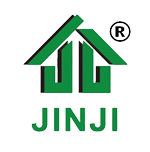Customer Complain: The Cement can not Dry After adding your MHEC or HPMC. —11 Oct. 2023
In the world of construction and building materials, cement holds a crucial place. It acts as a binding agent, providing strength and stability to structures. However, recently, there have been numerous customer complaints regarding cement not drying properly after using MHEC (Methyl Hydroxyethyl Cellulose), a common additive used in cement production.
MHEC is widely used in the construction industry to enhance the properties of cement. It acts as a water-retaining agent, improving workability and reducing water demand. This additive is known for its ability to increase the adhesive properties of cement, making it an essential component in the formulation of various construction materials.
However, some customers have reported that the cement, even after an extended period, fails to dry adequately. This issue has raised concerns not only among individual users but also among construction companies, causing delays and additional costs. It becomes essential to analyze the possible causes behind these customer complaints and find solutions to rectify them.
One plausible reason for cement not drying could be an improper dosage of MHEC. The exact amount of this additive needs to be carefully calculated to ensure the desired properties of the cement mixture. If the dosage exceeds the recommended limit, it can affect the hydration process and hinder the drying of the cement. Therefore, it is crucial for manufacturers and contractors to adhere to the specified guidelines and employ an appropriate dosage of MHEC.
Furthermore, the quality of the MHEC used in cement production plays a significant role in the drying process. Inferior or impure additives may contain contaminants that interfere with the chemical reactions necessary for cement to cure properly. Manufacturers should prioritize sourcing MHEC from reliable and reputable suppliers to mitigate such issues.
Another vital factor to consider is the environmental conditions during and after cement application. The drying process of cement heavily relies on temperature and humidity. Extremely high or low temperatures, as well as excessive humidity, can impede the drying of cement, regardless of the presence of MHEC. Customers should be informed about the optimal environmental conditions required for cement to dry efficiently.
Moreover, inadequate mixing of MHEC with the cement mixture can also lead to insufficient drying. The additive should be uniformly dispersed throughout the cement to ensure consistent performance. Manufacturers should consider investing in efficient mixing equipment to achieve a homogeneous blend.
To address the customer complaints related to cement not drying adequately, it is essential for manufacturers to conduct thorough research and analysis. They should collaborate with experts and professionals in the field to identify the root causes of the issue and implement necessary improvements. Additionally, manufacturers need to enhance communication with customers and provide clear instructions and guidelines to ensure proper usage of MHEC.
In conclusion, the recent customer complaints regarding cement not drying after using MHEC highlight the need for manufacturers and construction companies to reevaluate their production processes. Proper dosage, high-quality additives, favorable environmental conditions, and uniform mixing are crucial factors that should be considered to rectify this issue. By addressing these concerns, manufacturers can enhance customer satisfaction, streamline construction processes, and ensure the successful curing and drying of cement..
Thanks for your support JINJI CHEMICAL!
Post time: Oct-11-2023

